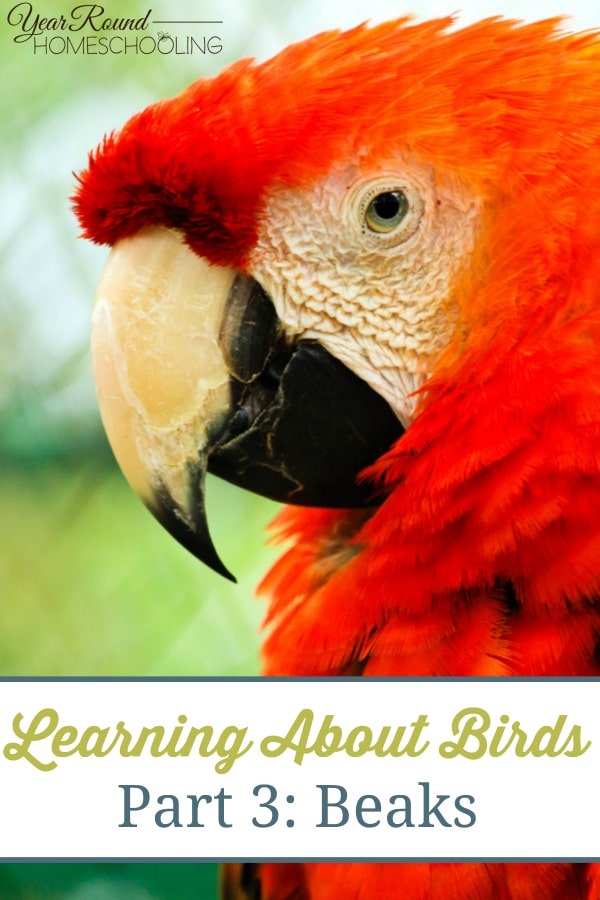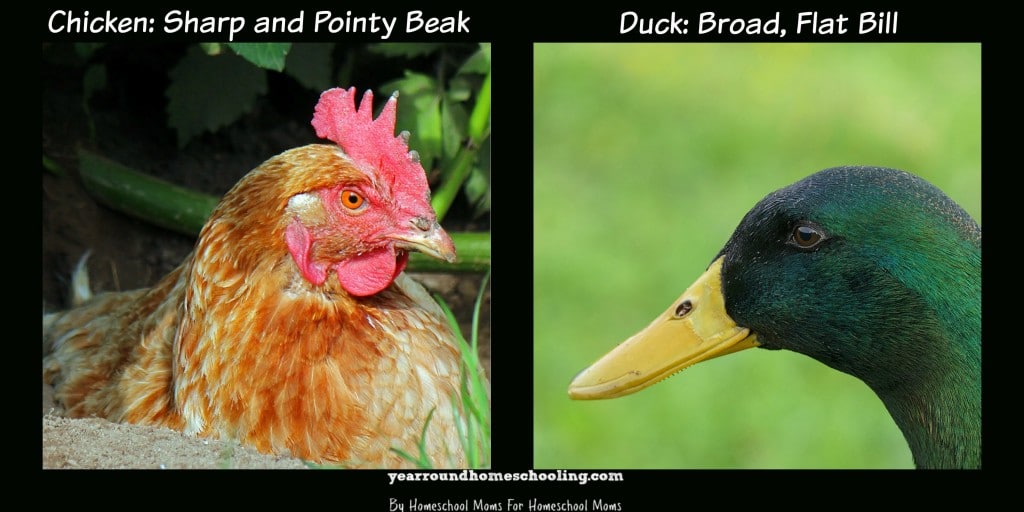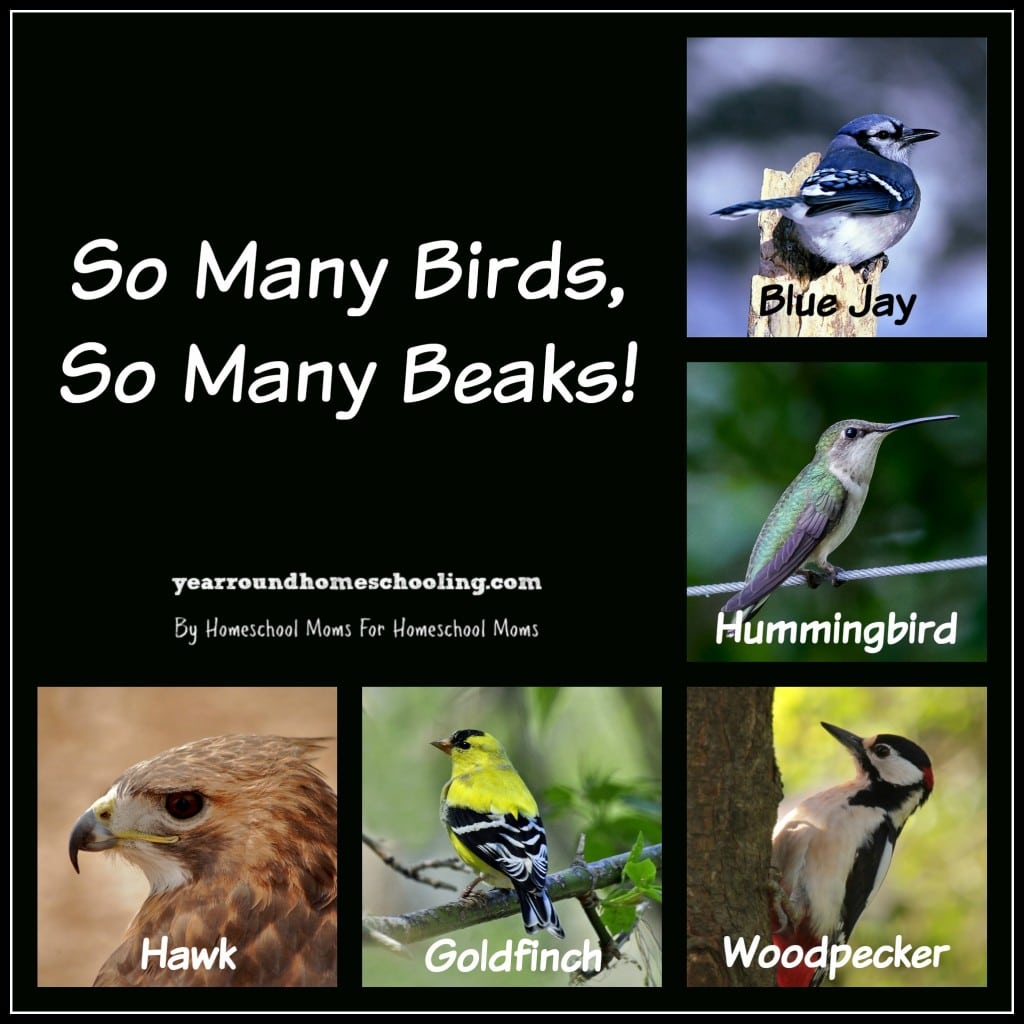All birds have some form of beak. Right? Other animals have beaks, too, which is why beaks don’t identify a bird as a bird. An octopus (cephalopod) has a beak. So do a turtle (reptile) and a platypus (mammal). Did you know that? I thought it was fascinating to learn what other kinds of animals have beaks.
Today, though, we’re talking about birds’ beaks and how they use them. They vary widely in form and function, but birds use their beaks for three main purposes: to eat, to defend themselves, and to clean and oil their feathers (called “preening”).

In the Handbook of Nature Study (my favorite nature study resource), Ms. Comstock compares the beaks of chickens to the bills of ducks. Chickens have hard, sharp, pointed beaks, perfect for digging for seeds in the dirt. Ducks have wide, flat, softer bills, which they use for scooping up weeds under water, and then letting the water drain off the food when they come up out of the water. A chicken wouldn’t do well with a duck’s bill, and a duck certainly couldn’t get the food it needs with a chicken’s beak!

What that tells us is, different birds eat different kinds of food, and they have specialized beaks made to get the food they eat. When we lived in Michigan, we lived in on a dirt road across the street from some state land. We had lots of birds at our feeders and quite a good variety, too. When we moved to North Carolina, though, I put up bird feeders and had very few birds come. I was positive when we moved to the South we’d have lots more birds, and some I’d never seen, and was quite disappointed. I asked my dad about it, and he told me that because our yard was fairly wooded, most of the birds living there would be insect eaters, rather than seed eaters, and that was why I only had a few kinds coming to visit. What does that tell us? Well, if we know what kind of beak a bird has, we can know what kind of food they eat, and can make an educated guess about where they live.
So, let’s take a look at some (hopefully) familiar birds:

- Blue Jay – Generalized beak: Fairly large, longer upper piece and smaller lower piece, these birds eat a variety of foods, wherever they can find it
- Hummingbird – Nectar-feeding beak: Long and tubular, used as a straw to drink nectar from flowers (although they also eat insects too- did you know?)
- Woodpecker – Chiselling beak: long, thin, strong beaks, used for opening up holes in trees to get to insects under bark. I read they can hammer up to 40 times per second!
- Goldfinch – Grain/Seed-Eating Beak – triangular shape, strong upper & lower mandibles, great for breaking seeds open
- Hawk – Raptorial beak: sharply hooked for tearing meat and holding it for eating
Don’t you look at birds in a whole new way? Think of some of the birds you know, and what their beaks look like. If you have access to chickens, watch how they find their food. If you’re able to visit a petting zoo or someplace that might have chickens and ducks or geese, compare their beaks and how they use them to get food!
(My information on types of beaks came from this article on Bird Beaks. They have lots more listed – go check them out!)
Additional Resources:
- A page from the Encyclopedia Britannica with general information about beaks
- Bird Adaptations – this page has pictures of twelve birds, and as you move your mouse over them, a little window pops up that describes their beak
- Project Beak has TONS of great information
- Beaks! – a cool book about beaks with beautiful cut-paper illustrations
What types of beaks do you see on birds in your backyard?
